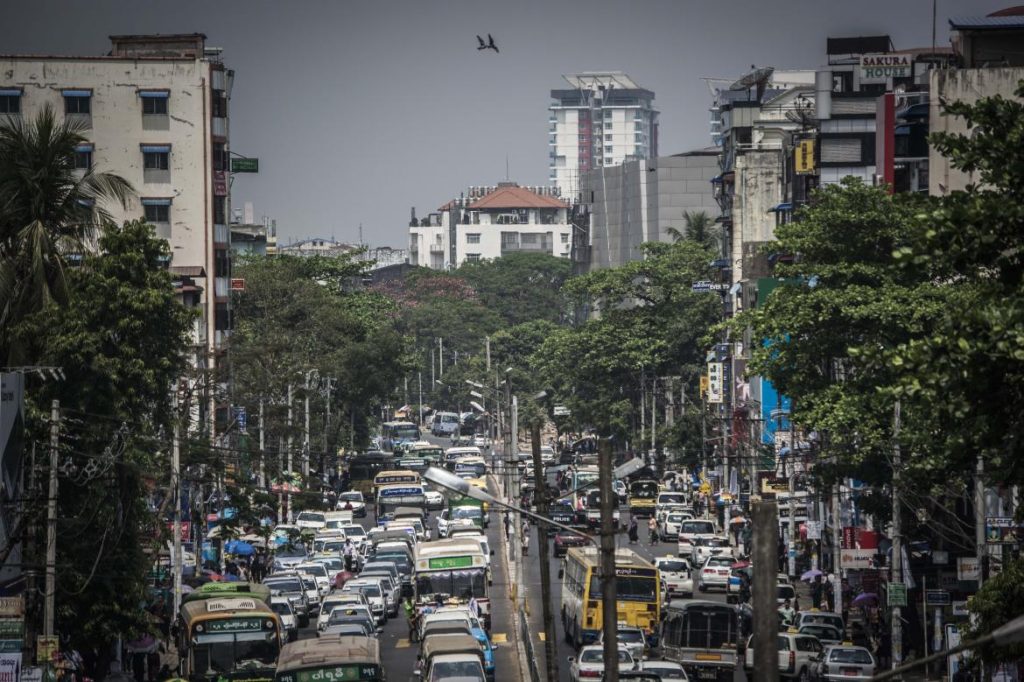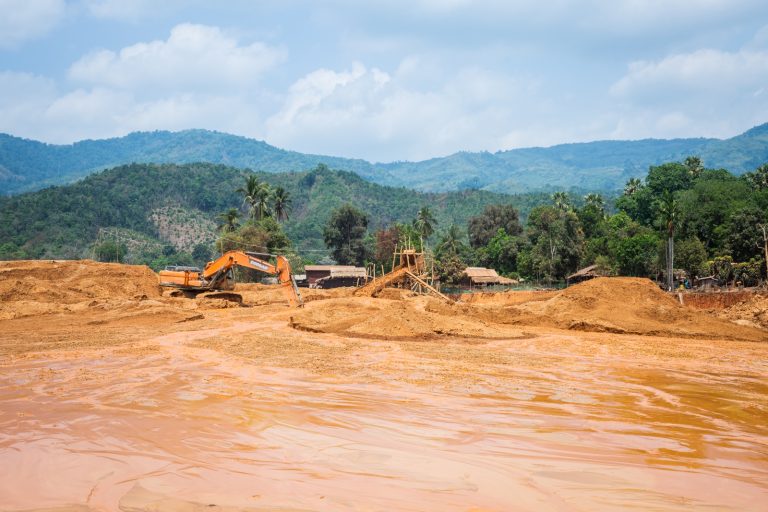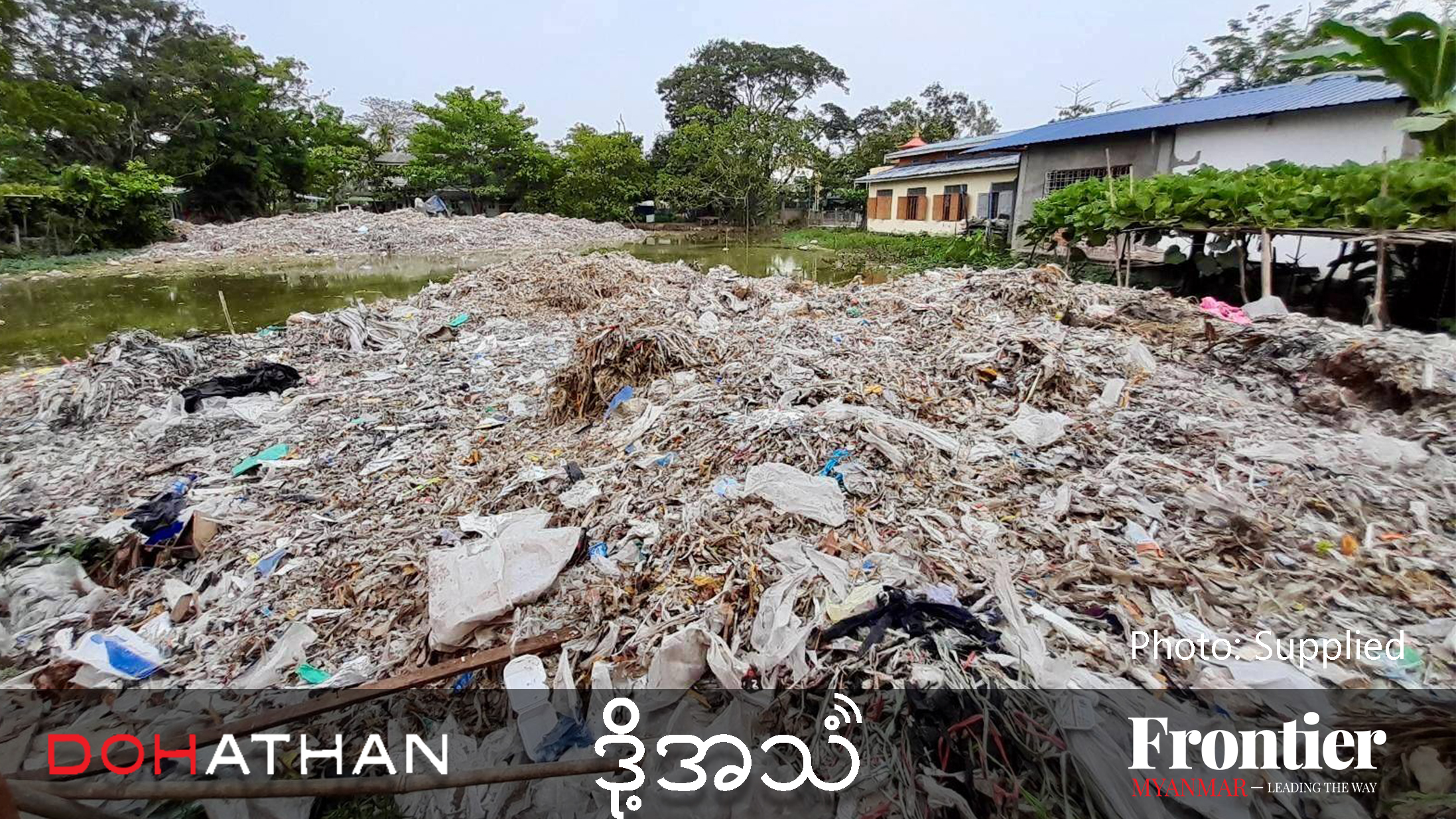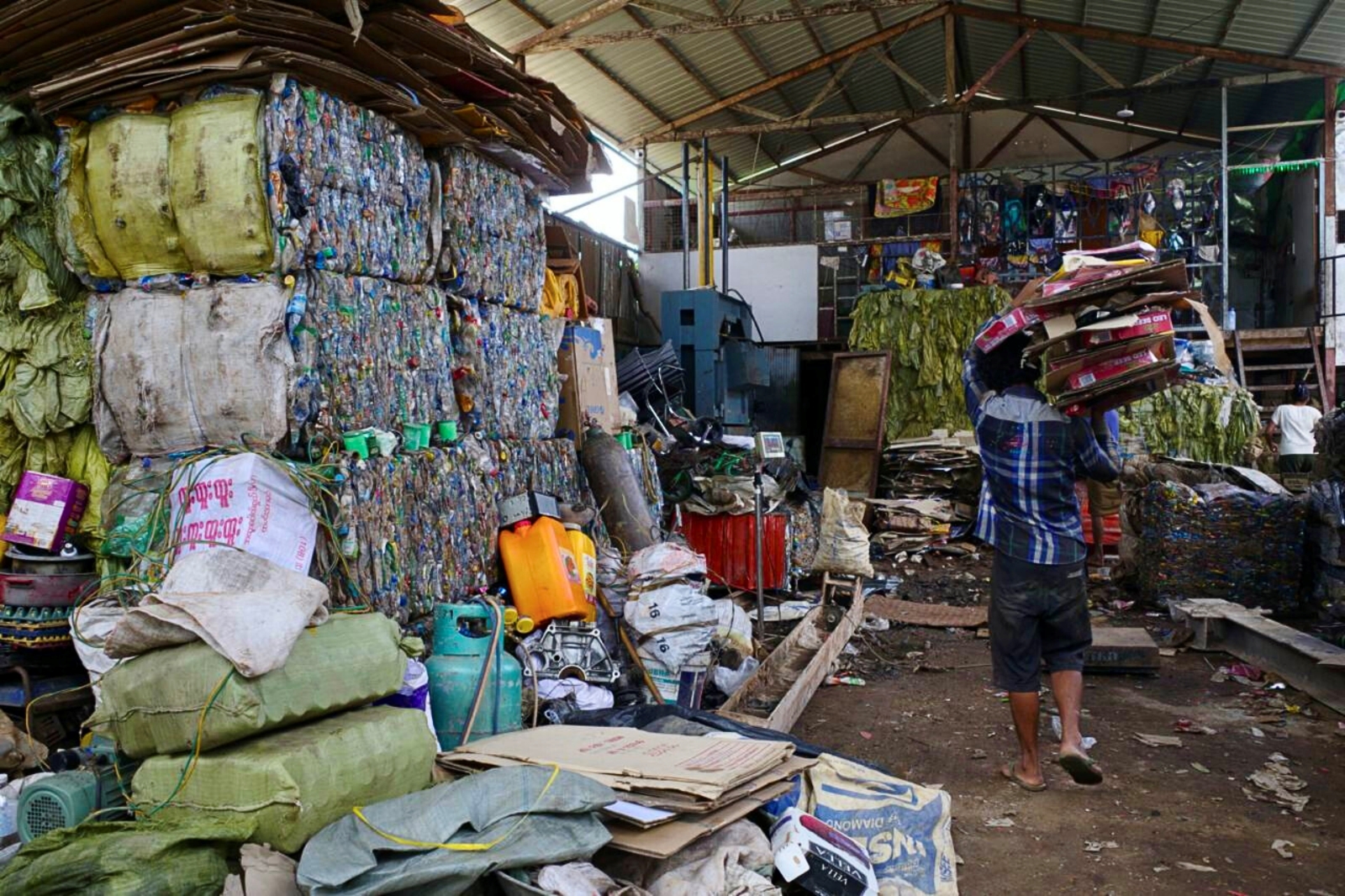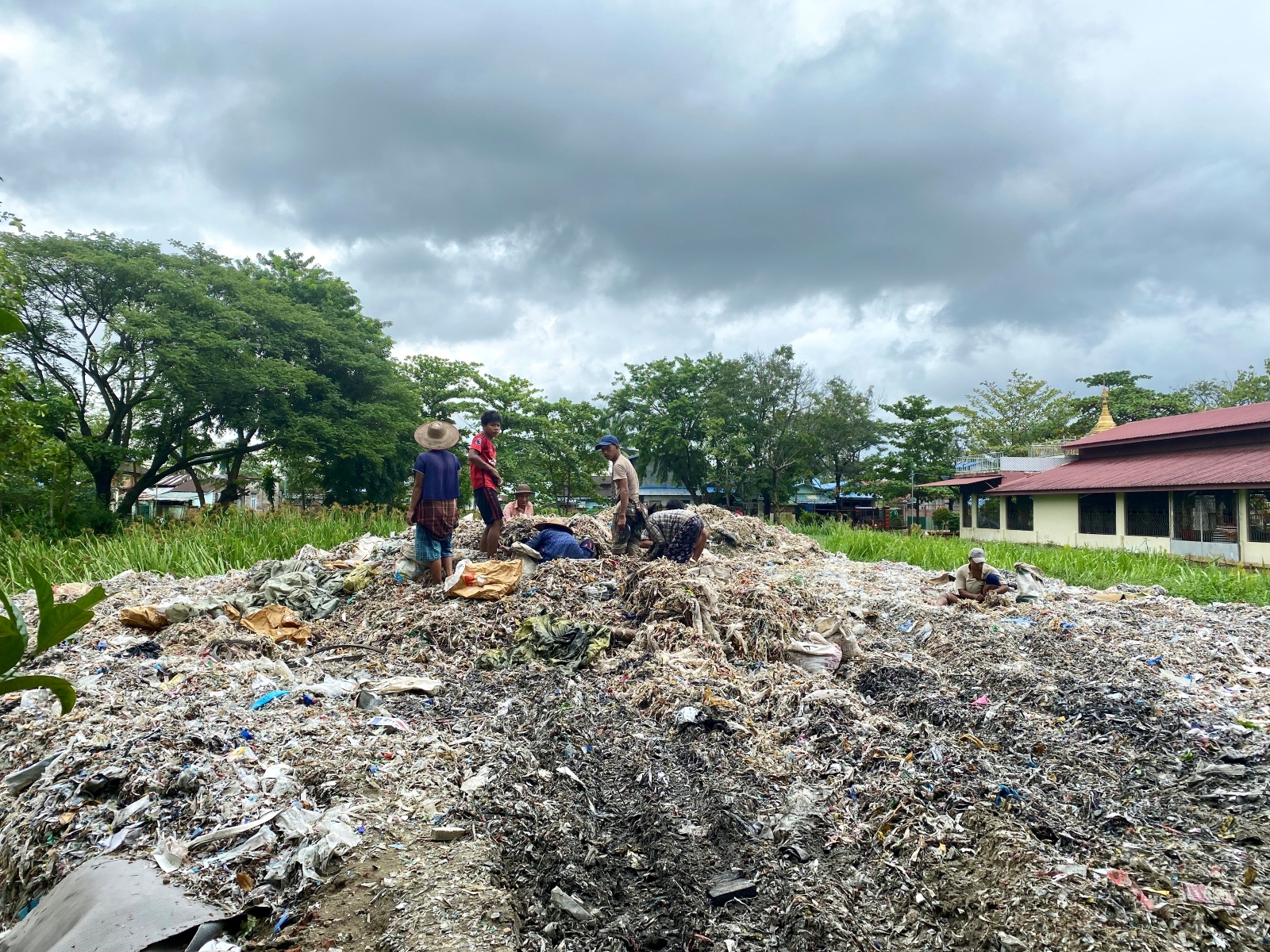A massive influx in imported vehicles in recent years has contributed to deteriorating air quality in Yangon but information about pollution levels is yet to be released.
By HEIN KO SOE | FRONTIER
Air pollution is becoming more noticeable in Yangon and its effects can be seen throughout the former capital.
In 2015, looking from Mahabandoola Bridge across the bustling downtown area, it was possible to have a sharp, clear view of the gleaming Shwedagon Pagoda.
These days the view of the city from bridge is not completely clear and the Shwedagon Pagoda is slightly obscured by the tiny particles that cause pollution.
Air pollution is a mixture of solid particles and gases in the atmosphere that can cause serious respiratory problems.
Support more independent journalism like this. Sign up to be a Frontier member.
The minute particles in the air that contribute to pollution can include chemicals such as carbon dioxide, sulphur dioxide, ammonia, methane, carbon monoxide, nitrogen dioxide and hydrochloride.
The particles are dangerous but are impossible to avoid in a polluted environment and because humans breathe about twenty thousand litres of air a day they often lead to health problems.
The short-term symptoms from exposure to air pollution include itchy eyes, nose and throat, wheezing, coughing, shortness of breath, chest pain, headaches, nausea, and upper respiratory infections such as bronchitis and pneumonia. Other illnesses associated with air pollution include asthma and emphysema.
Long-term effects can include lung cancer, cardiovascular disease, chronic respiratory illness, and allergies. The World Health Organization says air pollution is also associated with heart attacks and strokes.
The air in Yangon has been heavily polluted by the influx of vehicles in recent years, said Dr Kyaw Nyein Aye, an environmental specialist with the Ecological Laboratory (Eco-Lab), a group in Kamaryut Township that measures soil and water pollution for civil society groups.
“Everybody knows that Yangon’s pollution has reached levels not seen before,” Dr Kyaw Nyein Aye, told Frontier.
“Too many cars being in Yangon use low quality engine oil, which is contributing to the air pollution,” he said. The number of vehicles in the country has soared since imports were liberalised in 2011. Yangon has an estimated 750,000 vehicles, triple the number since 2008.
A car emits four times the weight of the vehicle in carbon dioxide a year, said Yangon City Development Committee, that has been compiling data from three fixed locations and 64 mobile units to measure air pollution in the city. The results will not be released until the end of this month after approval is given by the city mayor, said U Hla Myint, an assistant officer at the YCDC’s Pollution Control and Cleansing Department.
The Department of Environmental Conservation has also been compiling air pollution data, said U Myo Lwin, a former senior official with the department.
“I heard it started measuring the [particulate] matter in the air using PM10 and PM2.5 but couldn’t release the data,” U Myo Lwin said, referring to the standards used to measure levels of particulate matter in the atmosphere.
Air quality in Yangon is affected by industrial pollution as well as vehicle emissions. There are 29 industrial zones in Yangon and although not all factories belch greenhouse gases many produce waste water.
Under the 2012 Environmental Protection Law, the Ministry of Environmental Conservation and Forestry sets quality standards on factory emissions, effluents, solid waste, production procedures, processes and products.
Deforestation in Yangon Region has also had a negative effect on air quality.
“Yangon does not have many green places and forests,” U Tin Aye, secretary of the Myanmar Forestry Association, told Frontier. “Many of the forests and green spaces were destroyed in the last two decades by the wood industry, or used for coal or brick production, so carbon dioxide and other chemical compounds are increasing in the air,” he said.
The Yangon Region is almost completely deforested, said U Myo Lwin, the former Yangon Region director of the Department of Environmental Conservation, under MOECAF.
The department was established in 2012 by President U Thein Sein and five regional sub-offices were opened the following year, including in Yangon and Mandalay. In 2015, sub-offices were opened in all 14 states and regions.
In 2010 Yangon Region had almost 360,000 acres of forest cover, but it had fallen by more than half to 160,000 acres this year, show Forestry Department figures that put the deforestation rate at 11.2 percent a year.
“Too many forests were destroyed, that is clear,” said U Tin Aye.
“This is related to air pollution, water shortages and temperatures changing in the last five years in Myanmar. The reduction of forests also has an impact on air pollution because plants absorb carbon dioxide and other particles in the air,” he said.
City residents have noticed the change for the worse in air quality.
“I don’t know what air pollution is, but I know the sky is not clear this year,” said Ma Nyein Nyein, a teller at a private bank at Yuzana Garden City. “It is too hot, too dusty, too cloudy and there’s been too much rain and wind in the past two years. That is not only dangerous for people in Yangon, but people throughout Myanmar,” she said.


